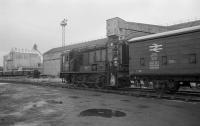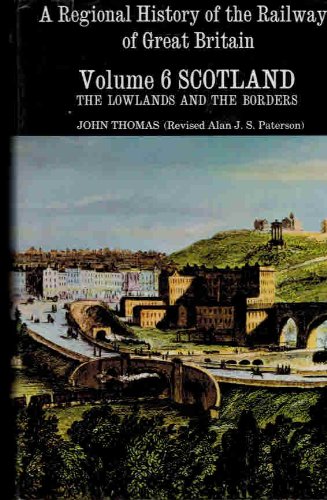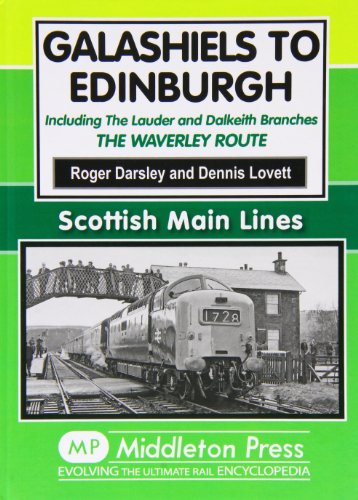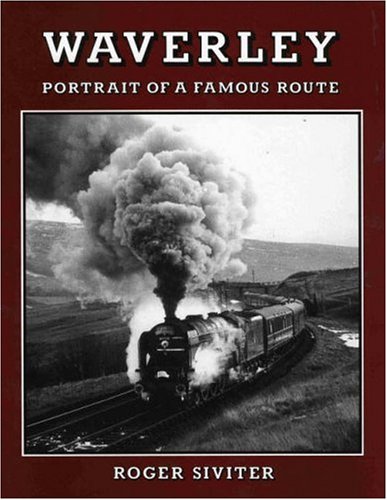Lothian Lines (North British Railway)
Introduction
The Lothian Lines are now entirely closed with the exception of; - a very short section over the River Esk at Monktonhall Junction where the East Coast Main Line has been diverted onto the southern of two bridges - the former line serving Meadows Yard between King's Road Junction and Meadows Box [2nd]. These lines were built to relieve the traffic problems (particularly coal from mines) between Leith, Portobello, Niddrie and Monktonhall Junction. Much of the system was single track with the exception of double track lines in Seafield and from Wanton Walls Junction to Monktonhall Junction. The system also included Craigentinny Meadows Yard (near Seafield), the replacement of a level crossing at Seafield with a bridge over the existing and new lines, a connection from Meadows Yard to the Caley system, expansion of NBR sidings at Seafield, and sidings for the Lady Victoria Colliery. A planned connection from the Caledonian Railway's Seafield line to the Leith Central line was not built. With Leith South Yard and the new Millerhill Marshalling Yard working together the closure of many of the Lothian Lines in 1967 is surprising. Their closure is perhaps a measure of the huge decline in traffic through Portobello East Junction.
Why built
Such was the volume of traffic passing through that nexus of the North British Railway east of Edinburgh, Portobello East Junction, that there were considerable delays to coal traffic from the Lothian mines to Leith, priority being given to the East Coast Main Line. Coal mine owners were going to promote their own independent route to the docks and the Caledonian Railway might be courted as part of this. Thus, grudgingly, the North British Railway was forced to build a duplicate system of lines in competition with their own existing system of lines - the new railways being the Lothian Lines.
Leith Imperial Dock had opened in 1898 and, with this new line, it was to be served with more sorting sidings at Leith South Yard and marshalling sidings at Meadows Yard.
Dates
| / /1913 | Lothian Lines (North British Railway) New Lothian Lines authorised, particularly as relief lines for colliery traffic. Railways Nos 2 to 12 and the South Leith Branch connection were not to be used for passenger traffic. The Lothian colliery owners were given the power to provide their own wagons and North British not obliged to provide wagons where the colliery uses its own wagons. In addition further sidings were authorised at Granton and the Caledonian Railway authorised to have facilities. |
| / /1915 | Lothian Lines (North British Railway) Opened. |
| / /1916 | Edinburgh, Leith and Granton Railway Lothian Lines (North British Railway) Additional sidings at Granton Harbour authorised. Caledonian Railway's access to sidings authorised in 1913 (as part of the Lothian Lines) repealed. |
Route described
The railway authorised consisted of a series of linking lines, not a continuous line of railway, chiefly giving access to South Leith from the Waverley Route, East Coast Main Line, Macmerry branch and Suburban line. See full description below.
Portions of line and locations
This line is divided into a number of portions.
Railway No. 1
This curve was not built. It was to be a south (junction with the Leith Central Branch (North British Railway)) to east (junction with the Leith New Lines (Caledonian Railway). It would have given access to Seafield from the Easter Road lines.
Railway No. 2
This double line from Leith South Yard to Meadows Box [2nd] was on the north side of the existing line and would quadruple the line from the yard to Meadows.
This marshalling yard was developed to the north of the South Leith branch to the east of the station on reclaimed land. The yard served the Leith Docks. It is approached from the east, from Portobello, and fans out over a wide area between Seafield Road and Marine Esplanade.
...
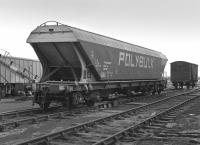
Bill Roberton //1981
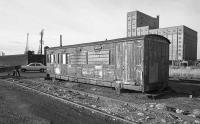
Bill Roberton //1975
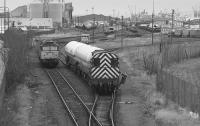
Bill Roberton //1990
Seafield Junction was at the Marine Esplanade Level Crossing (now called Seafield Level Crossing).
...
See also
Edinburgh and Dalkeith Railway

John Furnevel 09/07/2007
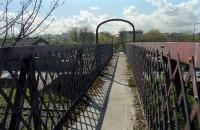
Ewan Crawford //1999
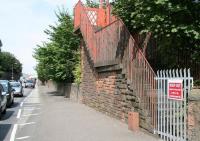
John Furnevel 05/08/2014
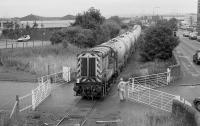
Bill Roberton //2001
In 1916 the Lothian Lines (North British Railway) opened here.
...
See also
Edinburgh and Dalkeith Railway

John Yellowlees 21/07/2023
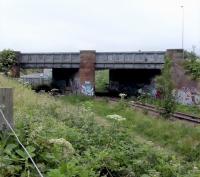
David Panton 18/06/2020
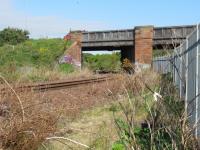
David Panton 07/05/2020
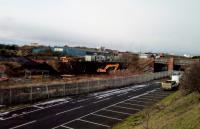
David Panton 12/02/2018
Railway No. 3
This was the double track connection to the Leith New Lines (Caledonian Railway), south of Seafield Viaduct, from Meadows Yard. It ran from Seafield Road Junction to Meadows Junction.
This junction was at the south end of the Caledonian Railway's Seafield Viaduct which crossed Seafield Road and the east end of the North British Railway's Seafield Yard by Seafield Junction [NB].
...
See also
Leith New Lines (Caledonian Railway)
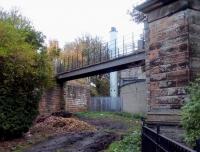
David Panton 07/11/2019
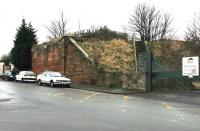
John Furnevel 10/12/2004
This junction was at the north end of Meadows Yard. The line ran south from here into the yard. To the north it divided into two double track lines with the more southerly line running to meet the Leith New Lines (Caledonian Railway) at Seafield Road Junction and the other running to Meadows Box [2nd].
...
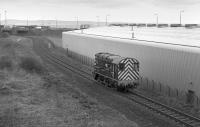
...
Bill Roberton //1992
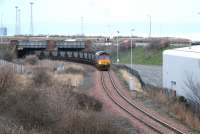
John Furnevel 07/02/2006
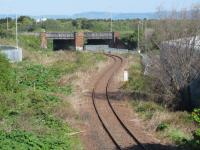
David Panton 07/05/2020
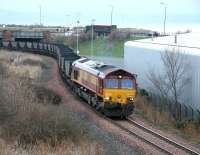
John Furnevel 07/02/2006
Railway No. 4
A short double track line ran from the existing South Leith branch at Meadows Box [2nd] to the new lines at Meadows Junction.
In 1916 the Lothian Lines (North British Railway) opened here.
...
See also
Edinburgh and Dalkeith Railway

John Yellowlees 21/07/2023

David Panton 18/06/2020

David Panton 07/05/2020

David Panton 12/02/2018
This junction was at the north end of Meadows Yard. The line ran south from here into the yard. To the north it divided into two double track lines with the more southerly line running to meet the Leith New Lines (Caledonian Railway) at Seafield Road Junction and the other running to Meadows Box [2nd].
...

...
Bill Roberton //1992

John Furnevel 07/02/2006

David Panton 07/05/2020

John Furnevel 07/02/2006
Railway No. 5
This was a very short section of double track between Meadows Junction and Meadows Yard.
This junction was at the north end of Meadows Yard. The line ran south from here into the yard. To the north it divided into two double track lines with the more southerly line running to meet the Leith New Lines (Caledonian Railway) at Seafield Road Junction and the other running to Meadows Box [2nd].
...

...
Bill Roberton //1992

John Furnevel 07/02/2006

David Panton 07/05/2020

John Furnevel 07/02/2006
This yard was on the Lothian Lines (North British Railway) close to Seafield and South Leith. It was also known as Craigentinny Meadows Yard. It was built on undeveloped land south west of South Leith.
...

John Furnevel 26/04/2004
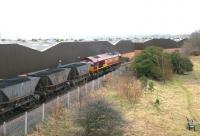
John Furnevel 07/02/2006

Craig Seath Collection //1963
Railway No. 6
This line comprised both Meadows Yard and the double track line to Kings Road Junction.
This yard was on the Lothian Lines (North British Railway) close to Seafield and South Leith. It was also known as Craigentinny Meadows Yard. It was built on undeveloped land south west of South Leith.
...

John Furnevel 26/04/2004

John Furnevel 07/02/2006

Craig Seath Collection //1963
This junction and box were on the Edinburgh and Dalkeith Railway's South Leith branch. The box opened with the development of the Lothian Lines (North British Railway).
...
See also
Edinburgh and Dalkeith Railway
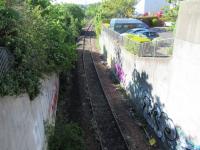
David Panton 14/05/2020
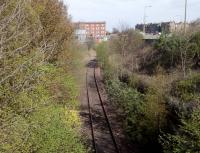
David Panton 14/04/2020
Railway No. 7
This was the principal part of the line with which most would associate it - a long single track line from South Leith Junction to Brunstane Park Junction (later Niddrie North of the Lothian Lines) to Wanton Walls Junction which bypassed the busy Portobello East Junction. But it also incorporated the double track section from Wanton Wells Junction to Monktonhall Junction. From a double track junction at South Leith Junction it ran round the north of Portobello Yard, crossed the North British Railway main line just west of Joppa station, then crossed the Waverley Route, before crossing over Niddrie North Junction overhead (where it had its equivalent Brunstane Park Junction), then to Wanton Walls Junction where the existing Edinburgh, Suburban and Southside Junction Railway line was modified to not make the Niddrie East Junction connection but to continue, as a double line to Monktonhall Junction where the Macmerry branch was joined. A connection to the main line was also made - see railway no 12.
In 1858 a curve was opened from the 1846 North British Railway to the South Leith branch of the Edinburgh and Dalkeith Railway.
...
See also
North British Railway
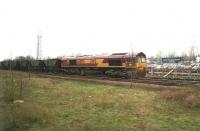
John Furnevel 13/04/2007

John Furnevel 22/03/2007
This junction opened with the Lothian Lines (North British Railway). Here three single track lines from the south, one from Niddrie West Junction, one from Niddrie South Junction and the other from Wanton Walls Junction [1st] met. These then ran north, as a single track, to South Leith Junction.
...

David Panton 23/04/2020
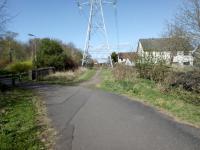
David Panton 08/04/2020
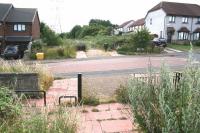
John Furnevel 15/07/2018
This was the junction between the single track line from Niddrie North Junction [Lothian Lines] (originally Brunstane Park Junction) and an altered double track connection to the line west to Niddrie West Junction. Both then ran south east as a double track to Monktonhall Junction to meet the Dalkeith Branch (North British Railway) and a connection to the East Coast Main Line. ...
More details
David Panton 22/05/2021
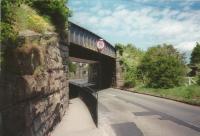
David Panton 26/05/1995
This was a junction which was formed in 1961 with the opening of the Millerhill Marshalling Yard (British Railways) which met the existing Niddrie West Junction to Monktonhall Junction route here. It appears that at first the junction was unnamed, considered part of Monktonhall Junction, but after closure of Wanton Walls Junction [1st] in 1967 the name was transferred to this ...
More detailsSee also
Millerhill Marshalling Yard (British Railways)
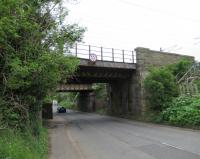
David Panton 30/05/2021
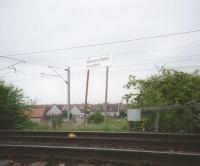
David Panton 29/05/1995
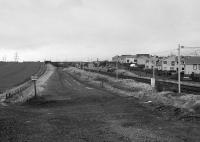
Bill Roberton //1989
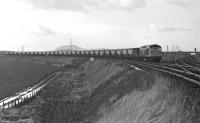
Bill Jamieson 05/02/1970
This junction has had several different layouts and refers to several slightly different locations. The original junction was for the Macmerry Branch (North British Railway) the present version is between the East Coast Main Line (former North British Railway) and line to Millerhill Marshalling Yard (British Railways).
...
See also
North British Railway
Macmerry Branch (North British Railway)
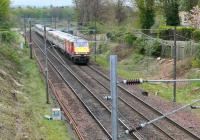
John Furnevel 03/05/2018
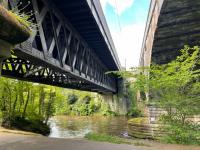
Duncan Ross 22/05/2021
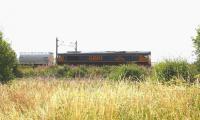
John Furnevel 19/07/2018
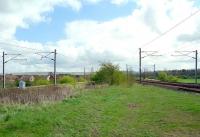
Ewan Crawford //1999
Railway No. 8
This was a short double track section between the goods lines at Portobello West Junction ([North British Railway]] main line) and South Leith Junction (Lothian Lines). It allowed trains from the west to take to the south without fouling Portobello East Junction. It also allowed trains from the south to take the goods lines to the west without crossing the passenger lines and bypassing Portobello Yard.
This was the junction between the North British Railway main line and its short connecting curve which ran north to meet the Edinburgh and Dalkeith Railway's South Leith branch. The curve allowed trains from the east to join the branch and vice versa. It was opened to the west of Portobello [2nd] station.
...
See also
North British Railway
New Portobello Station (North British Railway)
Portobello Yard (North British Railway)
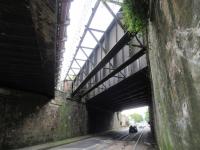
David Panton 19/08/2021
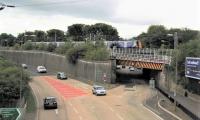
John Furnevel 01/08/2011

John Furnevel 07/09/2016
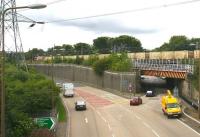
John Furnevel 01/08/2011
In 1858 a curve was opened from the 1846 North British Railway to the South Leith branch of the Edinburgh and Dalkeith Railway.
...
See also
North British Railway

John Furnevel 13/04/2007

John Furnevel 22/03/2007
Railway No. 9
This short single track curve ran from Brunstane Park Junction to Niddrie West Junction. This have access to the west via the Suburban line and Niddrie Yard was located here, the precursor to the Millerhill Marshalling Yard.
This junction opened with the Lothian Lines (North British Railway). Here three single track lines from the south, one from Niddrie West Junction, one from Niddrie South Junction and the other from Wanton Walls Junction [1st] met. These then ran north, as a single track, to South Leith Junction.
...

David Panton 23/04/2020

David Panton 08/04/2020

John Furnevel 15/07/2018
This junction is between the single track line from Portobello East Junction and the double track from Niddrie South Junction. The line runs west to Craiglockhart Junction round the Edinburgh Suburban line (the former Edinburgh, Suburban and Southside Junction Railway).
...
See also
Edinburgh and Dalkeith Railway
Edinburgh, Suburban and Southside Junction Railway
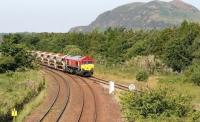
John Furnevel 01/07/2018
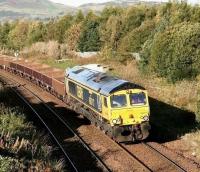
John Furnevel 15/10/2017
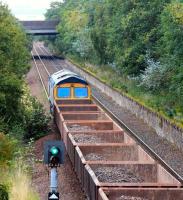
John Furnevel 10/09/2017
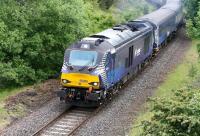
John Furnevel 11/08/2019
Railway No. 10
This short connection ran from Brunstane Park Junction to a location north of Niddrie South Junction (saving on building a bridge to cross the Suburban Niddrie West Junction to the new Wanton Wells Junction alignment).
This junction opened with the Lothian Lines (North British Railway). Here three single track lines from the south, one from Niddrie West Junction, one from Niddrie South Junction and the other from Wanton Walls Junction [1st] met. These then ran north, as a single track, to South Leith Junction.
...

David Panton 23/04/2020

David Panton 08/04/2020

John Furnevel 15/07/2018
This junction is in the south east of Edinburgh. It controls the junction between the Edinburgh Waverley to Tweedbank line and the goods only line from Slateford and Haymarket. It is a busy location with freight, passenger trains and depot traffic, made difficult by the single track line north to Portobello.
...
See also
Edinburgh and Dalkeith Railway
Edinburgh and Hawick Railway (North British Railway)
Millerhill Marshalling Yard (British Railways)
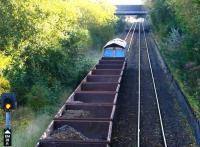
John Furnevel 15/10/2017
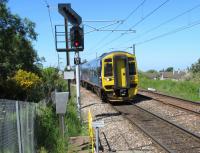
David Panton 05/06/2018
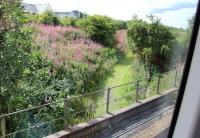
John Furnevel 09/08/2013
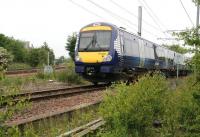
John Furnevel 10/06/2018
Railway No. 11
This was a short re-alignment at the new Wanton Wells Junction of the existing Niddrie West Junction to Niddrie East Junction alignment of the [[Edinburgh, Suburban and Southside Junction Railway (running on the solum of the earlier Fisherrow branch of the Edinburgh and Dalkeith Railway. Around here the Suburban turned south to meet the North British Railway main line at Niddrie East Junction. This was now altered to use Railway No 7 to run to Monktonhall Junction. The near Wanton Wells Junction alignment to Niddrie East Junction was abandoned.
This was the junction between the single track line from Niddrie North Junction [Lothian Lines] (originally Brunstane Park Junction) and an altered double track connection to the line west to Niddrie West Junction. Both then ran south east as a double track to Monktonhall Junction to meet the Dalkeith Branch (North British Railway) and a connection to the East Coast Main Line. ...
More details
David Panton 22/05/2021

David Panton 26/05/1995
Railway No. 12
This was a new connection to the west of the existing Monktonhall Junction (and the viaduct over the Esk). This gave an approach to the North British Railway from Wanton Walls Junction.
This junction has had several different layouts and refers to several slightly different locations. The original junction was for the Macmerry Branch (North British Railway) the present version is between the East Coast Main Line (former North British Railway) and line to Millerhill Marshalling Yard (British Railways).
...
See also
North British Railway
Macmerry Branch (North British Railway)

John Furnevel 03/05/2018

Duncan Ross 22/05/2021

John Furnevel 19/07/2018

Ewan Crawford //1999
Railway No. 13
This was a new connection for the Lady Victoria Pit. It ran from north of Brewers Bridge down the east side of the Waverley Route to reversing spur south of the bridge. This was the pit's northern access, via the headshunts and a change of direction.
Lady Victoria Colliery was served by a large yard and sidings warranting their own signal box. A major expansion of the Newbattle Colliery led to a new connection and exchange sidings being laid out on the east side of the Waverley Route. The whole scheme was built on a grand scale and included the new village of Newtongrange, to the north. The pit was named for Lady Victoria Alexandrina, ...
More detailsSee also
Edinburgh and Hawick Railway (North British Railway)
Lady Victoria Colliery (Lothian Coal Co Ltd)

John Furnevel 16/08/2020
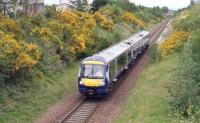
John Furnevel 22/05/2022
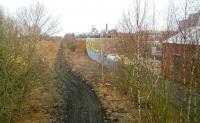
John Furnevel 29/03/2007
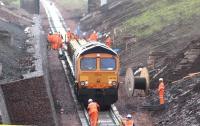
John Furnevel 17/10/2014
This reversing spur was an isolated part of the Lothian Lines (North British Railway) built to allow northbound departures from the Lady Victoria Colliery.
...
Railway No. 14
This was the southern approach to the Lady Victoria Pit. A connection from south of Brewers Bridge ran to join railway 13, forming a loop on the east side of the Waverley Route. Railway 13 and 14 allowing access to the pit from either direction.
Lady Victoria Colliery was served by a large yard and sidings warranting their own signal box. A major expansion of the Newbattle Colliery led to a new connection and exchange sidings being laid out on the east side of the Waverley Route. The whole scheme was built on a grand scale and included the new village of Newtongrange, to the north. The pit was named for Lady Victoria Alexandrina, ...
More detailsSee also
Edinburgh and Hawick Railway (North British Railway)
Lady Victoria Colliery (Lothian Coal Co Ltd)

John Furnevel 16/08/2020

John Furnevel 22/05/2022

John Furnevel 29/03/2007

John Furnevel 17/10/2014
Additional sidings
The Act also authorised several sidings, including some additional sidings in Fife and at Granton to which the Caledonian Railway was to be granted facilities (repealed in 1916).
Books










